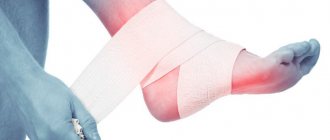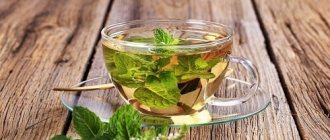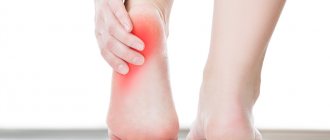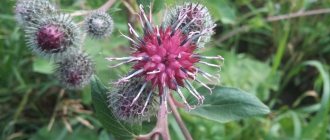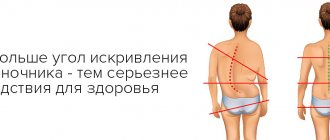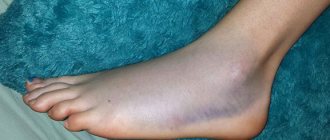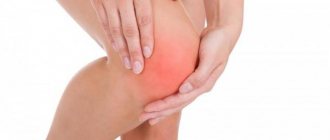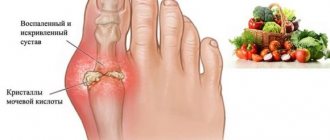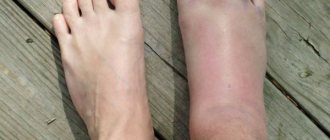The name of the disease, gout, is probably known to everyone. But when the first symptoms of gouty arthritis appear, few people remember it. It happens that after festive libations or a rich table at a corporate party, sudden pain in the legs may occur - it risks remaining unrecognized until the first tophi appear. It is these nodes, disfiguring the joints of the limbs, that are commonly considered the main sign of gout. But these compactions in the subcutaneous tissue do not appear soon, 5-10 years after the onset of the disease.
Meanwhile, gouty arthritis affects every 20th elderly person and can be a harbinger of other, even more serious diseases. Let's figure out what this disease is and how you can fight it.
What happens to joints with gouty arthritis?
Being a metabolic disorder, gout is associated with insufficient excretion of uric acid by the kidneys. Because of this, breakdown products begin to accumulate in the blood (in particular, in plasma), causing hyperuricemia. Hyperuricemia itself does not mean the onset of gout - it can occur as a result of excessive fatty foods or physical overload. However, this pathology causes damage to the renal glomeruli and gradually leads to kidney damage and, as a consequence, gouty arthritis. The symptoms of gouty arthritis cannot be ignored - they seem to warn the patient of even more serious complications. Thus, excess uric acid in the blood negatively affects the cardiovascular system, increasing the risk of heart attack and stroke.
Over time, monosubstituted sodium urate crystallizes in the joints, kidneys, forehead, earlobes and other tissues 5-6 years after the onset of the disease, causing thickening of the connective tissue (tophi). Over time, tophi can grow in clusters on the affected areas, reducing the quality of life of patients and requiring treatment of gouty arthritis with drugs.
Often the consequence of gouty nodes is inflammation of the periarticular bursae and tendons. It not only causes pain in the joint, but also gradually leads to a limitation of its mobility. Gout is accompanied by extensive erosion of the articular surfaces caused by calcium deposits in adjacent tissues, as well as impaired formation and destruction of bone tissue.
The disease also leads to the formation of kidney stones (uric acid stones), a chronic inflammatory process and renal colic.
Applications
Application is a therapeutic procedure in physiotherapy, which consists of applying substances with therapeutic properties to the surface of the body. Some of them (clay, medical bile) have the ability to accelerate the resorption of edema, others (paraffin, ozokerite) stimulate the regeneration of tissues affected by inflammation. It is strictly forbidden to use applications for gout attacks. During treatment procedures, the temperature in the area of diseased joints increases, which will increase inflammation and cause it to spread to healthy joints.
The duration of any application is 1-2 hours. At the end of the procedure, the remaining mixture must be thoroughly rinsed off. It is recommended to rub a moisturizing cream into the skin, since the use of paraffin, ozokerite, and bischofite causes increased dryness of the epidermis.
| Application tool | Description and methodology of the treatment procedure |
| Paraffin, ozokerite | Paraffin (a wax-like mixture of saturated hydrocarbons) and ozokerite (a natural hydrocarbon from the petroleum group) have approximately the same melting point - 50-60°C. Therefore, a mixture of them is often used for applications. Paraffin and ozokerite in equal proportions are melted in a water bath and cooled to approximately 40 °C. Using a wide brush, wooden spatula or spatula, apply the mixture in a thin layer to the joint. After the mixture has hardened, the procedure is repeated. A total of 3-5 layers are applied |
| Medical bile | The composition of bile includes fatty acids, inorganic salts, biologically active substances, furatsilin, stabilizers. The preparation for applications can be used both in pure form and in a mixture with water (1:1). A sterile napkin is soaked in bile, lightly wrung out and applied to the sore joint. |
| Bishofite | Bishofite is a mineral that is a source of magnesium chloride and other trace elements beneficial for joints. In pharmacies you can purchase a pure concentrated solution or with the addition of plant extracts. To carry out the procedure, a sterile bandage folded in several layers is moistened in undiluted bischofite and then applied to the joint |
Risk group for gouty arthritis
Gout is a disease with severe comorbidity, i.e., it often accompanies other chronic diseases, such as type II diabetes mellitus, arterial hypertension and other cardiovascular pathologies, Gierke's disease, and chronic renal failure. When deciding how to treat gouty arthritis, these pathologies cannot be left without treatment. In addition to the factors mentioned, an increased risk of gouty arthritis creates:
- excessive consumption of foods containing purines, chemical precursors of uric acid;
- antitumor therapy;
- the presence of autoimmune diseases and problems with the genitourinary system;
- alcohol abuse;
- shock and stress (including due to overwork);
- genetic predisposition;
- hormonal imbalance;
- taking medications that increase the production of uric acid;
- high-carbohydrate diet, especially with active consumption of processed foods;
- insufficient or unbalanced nutrition;
- infectious diseases;
- injuries;
- hypothermia.
It is noted that men over 40 years of age need treatment for gouty arthritis approximately 12 times more often than women.
Symptoms of gouty arthritis
Symptoms and treatment of gouty arthritis may vary depending on the period of the gout disease - latent, acute or chronic. And if during the latent stage only a biochemical test of blood or urine helps to reveal the disease, then an acute gouty attack cannot be missed. The attacks occur irregularly, the intervals between them vary from a couple of weeks to a year or more. Gout is characterized by pain when moving and pressing on the tissue around the affected joint: negative symptoms usually increase at night.
The disease usually affects the small joints of the extremities; in 9 out of 10 cases, the big toe is the first to be affected.
The clinical picture of gouty arthritis in the chronic stage (when pain lasts 3 months or more) implies the presence of exacerbations and remissions. In later stages, deformation of the affected joints and limbs is observed.
By the way, the level of urate in the blood can remain low even despite solid deposits in the joints, ears and adjacent tissues.
Important: arthritis and osteoarthritis contribute to the localization of gouty joint lesions in the affected areas. In this case, differential diagnosis of the two diseases, which can only be carried out by a doctor, is especially important.
Tinctures
To prepare tinctures, use vodka without dyes and taste improvers or 96% ethyl alcohol diluted with water in a 1:1 ratio. For people with dry or sensitive skin, it is better to take olive, sunflower, corn or flaxseed oil as an extractant. To prepare the tincture, you need to collect fresh plant materials from the beginning of spring and put them in a glass or ceramic container. These are plantain leaves, shepherd's purse, St. John's wort, nettle, elecampane, thyme, calendula flowers, dandelion, chamomile.
When adding herbs, lightly compact them and add vodka or oil. After filling the container, it must be left in a warm, dark place for 2-3 months. The resulting dark green aromatic tincture should be rubbed into sore joints 2-3 times a day.
Herbal tincture with vodka.
Acute gouty arthritis
Acute gouty arthritis occurs as a consequence of hyperuricemia, which is asymptomatic. At the same time, kidney stones may occur. If left untreated, this condition can lead to frequent pyelonephritis, nephrosclerosis and renal failure within 3-4 years. Symptoms of this pathological condition include:
- fever, which is accompanied by severe pain and inflammation in the joints;
- The 1st day of pain is the most painful;
- the skin over the sore joint turns red and becomes hot;
- the joint of the big toe (first metatarsophalangeal) is swollen and very painful;
- asymmetric swelling of the joints.
Symptoms and treatment of acute gouty arthritis should be determined by a doctor by palpation, radiography and culture of synovial fluid.
Classification of gout
- Acute attack of gout. Sharp pain in the affected joint is accompanied by changes in the skin over it and a deterioration in overall health. As a rule, one joint is affected; polyarthritis is rare and predominantly affects women. Fever can be febrile, with severe intoxication. Movement in the joint is impossible due to severe pain. An acute attack most often begins at night after exposure to provoking factors. The first attack occurs suddenly, and subsequent ones may be preceded by tingling sensations. Without treatment, gout attacks become more frequent and new joints may become inflamed.
- Subacute course. For a long time, the patient may experience mild pain in the area of the affected joint, swelling and other signs of inflammation periodically appear.
- Interictal period. Between attacks, the disease does not manifest itself in any way, and the patient feels absolutely healthy, so doctors talk about the intermittent course characteristic of gout. Remission can last for several years, but usually attacks recur 1-2 times a year.
Atypical forms of gout
Diagnosis of atypical forms of gout is especially difficult; there are several of them:
- rheumatoid-like;
- pseudophlegmonous;
- polyarthritic (migratory);
- asthenic;
- periarthritic form, that is, when the inflammation is localized in the tendons and periarticular bursae (bursitis and tendonitis) without involving the joints. This form is most often localized in the heel tendon area.
If you experience similar symptoms, consult your doctor
. It is easier to prevent a disease than to deal with the consequences.
How to treat gouty arthritis
Being, in fact, one of the chronic arthritis, gout is treatable much better than other joint diseases. Although a complete cure is not possible, metabolic disorders can be controlled through medication, physical therapy and diet.
The treatment regimen is determined individually. It may include measures to relieve exacerbations and pain attacks, prevent relapse, and eliminate discomfort from a chronic disease
If a patient's gouty arthritis does not have a genetic etiology and is not associated with other chronic diseases, its course depends entirely on the patient's compliance with the therapeutic regimen, in particular, a diet with a reduced purine content.
Regular monitoring of uric acid levels and a course of enterosorbents are also recommended. Gout is not treated surgically, however, if the tophi grows excessively, a minor operation may be performed for the patient’s convenience.
Clinical recommendations for gouty arthritis necessarily include losing excess weight.
Treatment of gouty arthritis with medications
A comprehensive treatment regimen for gouty arthritis with medications includes anti-inflammatory drugs (steroidal or non-steroidal, depending on the condition), uricodepressive, uricosuric and uricolytic drugs. After the inflammation is relieved, the primary goal of therapy is to stimulate the excretory function of the kidneys, due to which the level of uric acid in the patient’s body decreases.
Physiotherapy in the treatment of gout
Physiotherapeutic techniques for the treatment of gouty arthritis are primarily aimed at alleviating pain symptoms and stimulating metabolic processes in tissues. The best effect is demonstrated by:
- high-frequency magnetic therapy;
- UV irradiation in erythemal doses;
- Low intensity UHF therapy;
- centimeter wave therapy;
- DMV therapy for the adrenal glands.
If the mentioned types of therapy are contraindicated for the patient, treatment with leeches is possible.
Diet for gouty arthritis
Diet plays a leading role in discussions about how to treat gouty arthritis. To keep the symptoms of gouty arthritis under control, it is essential to follow a low-carbohydrate diet with minimal purine levels. And although these compounds are found in all foods without exception, it is important to exclude their main sources:
- meat, fish and other broths;
- offal, lard;
- canned food;
- tomatoes, potatoes and other nightshade plants;
- legumes (especially beans, peas, lentils).
Consumption of meat and fish should be reduced as much as possible. Milk and fermented milk products and eggs are used as sources of protein in the anti-gout diet. It is recommended to minimize the consumption of chocolate, mushrooms, and fructose.
Everything fried is also prohibited. Preference should be given to dishes prepared by steaming, stewing or boiling. Alcohol must be completely avoided; it not only causes hyperproduction of urate, but also reduces the effectiveness of drug treatment for gouty arthritis. Remember that alcohol is one of the main “provocateurs” of exacerbation.
Under no circumstances should you go hungry. Fluid intake (from 2 liters per day) should include mineral and purified water, green tea, unsweetened fruit drinks to prevent uric acid kidney stones.
Following a diet helps to significantly reduce the patient’s need to treat gouty arthritis with medications.
Prevention of gout
The main thing in the prevention of gout is proper nutrition, especially if a biochemical blood test revealed an increase in uric acid or there is a hereditary predisposition. It is also recommended to limit alcohol consumption and treat concomitant diseases that may contribute to the development of gout.
Dietary recommendations are similar to those for gout, although they do not require such strict adherence. It is recommended to limit proteins and fats, spicy and smoked foods, preservatives and spices with a parallel increase in the diet of vegetables (except legumes) and fruits, and dairy products. It is recommended to drink plenty of fluids to improve urate elimination.
General strengthening of the body will help maintain its ability to regulate the balance of metabolic processes. For this purpose, dosed physical activity that trains the cardiovascular and respiratory systems is recommended.
This article is posted for educational purposes only and does not constitute scientific material or professional medical advice.
